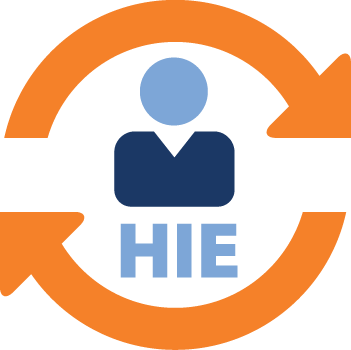 Relying on paper charts, phone calls and fax machines to send and receive patient health information between care providers is unreliable and time-consuming and often leaves providers with an incomplete picture of their patients' medical history. This wastes time and resources and can lead to medical errors. These old methods of communication are rapidly being replaced by Health Information Exchange (HIE). Using nationally recognized communication protocols and safety standards, HIE is the secure electronic transfer of Protected Health Information (PHI) among organizations.
Relying on paper charts, phone calls and fax machines to send and receive patient health information between care providers is unreliable and time-consuming and often leaves providers with an incomplete picture of their patients' medical history. This wastes time and resources and can lead to medical errors. These old methods of communication are rapidly being replaced by Health Information Exchange (HIE). Using nationally recognized communication protocols and safety standards, HIE is the secure electronic transfer of Protected Health Information (PHI) among organizations.
HIE allows doctors, nurses, pharmacists and other providers to share patient information in a secure, timely and efficient manner. This enables them to collaborate and consider their patients’ full medical history, medications, and other data to make informed decisions, improve diagnosis, avoid duplicative testing, and reduce medical errors and re-admissions. The electronic exchange of actionable information improves the quality, safety and efficiency of health care.
There are three progressive levels of HIE implementations:
1. To coordinate care, Directed Exchange enables providers to send and receive secure information electronically.
2. For unplanned care, Query-based Exchange adds capabilities to find or request information from other providers.
3. For patient control, Consumer-Mediated Exchange allows patients to aggregate and control their health information.
The HIE capabilities are typically provided by organizations specialized in networking technology. The organizations design and support the infrastructure needed to securely transfer clinical information between the multiple disparate Electronic Health Record (EHR) systems used in a provider network.
Besides available commercial solutions, many U.S. states provide HIE alternatives on a statewide level to support the Meaningful Use requirements. In the Commonwealth, the Mass HIway, is the statewide HIE .
Information on the nationwide Health Information Exchange strategy, including the alternatives, capabilities and advantages of HIE can be found on HealthIT.gov.
HIE Toolkit
The HIE Use Case Toolkit provides tools and use case examples for guiding an organization through the HIE process.
HIway Connections Map
The searchable HIway Connections Map lists all organizations connected to the Mass HIway, either directly or via a HIway Trusted HISP
